Washington farmers and ranchers are sharply divided over solar energy development on agricultural land, with 38% in favor and 38% opposed, found a survey. The survey revealed many ranchers and farmers are not familiar with agrivoltaics, the practicing of co-locating solar projects and agricultural activity on the same area of land.
Agrivoltaics not only provides the landowner with two sources of income for one plot of land, but research finds it often benefits the agricultural production, such as healthier soil and food for sheep grazing.
The survey was part of an in-depth report on the feasibility of agrivoltaics in Washington state from The Nature Conservancy, American Farmland Trust, Washington State University and the Spatial Climate Solutions Lab at UC Santa Barbara.
(Also read: Colocating solar with Washington’s most valuable crop)
The researchers said support for general solar projects on agricultural land was evenly split, with 38% of respondents supporting solar projects sited on farmland and 38% of respondents in opposition. About 67% of the farmers and ranchers said solar developers should sometimes or always be allowed to build on marginal or least-productive land, and 78% said developers should sometimes or always be allowed to build on land that is not suitable for agriculture.

After asking the farmers and ranchers about their perceptions of solar energy on farmland, the survey found many of the respondents had never heard of agrivoltaics.
About 60% of the farmers surveyed indicated at least a basic understanding of the term “agrivoltaics,” while about 40% had either never heard of it (~30%) or had heard the term but didn’t understand what it meant (~11%).
However, after the researchers presented the definition of agrivoltaics and example photos of agrivoltaics projects, the researchers said 55% of the farmers agreed they were more likely to support solar projects on farmland. Nearly 60% of the farmers said they would be willing to host solar panels on their land if they could continue farming under and around the panels.
“This points to general receptivity to agrivoltaics among producers, at least in concept,” the report said.
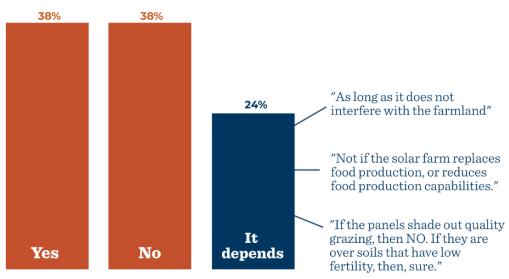
Despite 57% of the Washington farmers saying they were either very interested (17%) or moderately interested (40%), only 24% were confident that agrivoltaics would be possible in their current production system.
The survey found modest interest in agrivoltaics among the Washington farmers and ranchers. The survey results and stakeholder interviews “clearly point” to livestock integration as the easiest production system to combine with solar in Washington, the report said.

When the researchers asked the farmers about what types of activities would be possible on their land under and around solar panels, 44% said grazing sheep would be possible and 42% said other livestock, such as cattle and poultry, would be possible.
Fewer farmers considered crop production feasible, with roughly a third of farmers saying they believed food crops was possible to collocate with solar and 28% saying it would be possible to navigate tractors and other farming equipment around their land with solar panels.
Those who were interested in adopting agrivoltaics cited reasons including a stable income from solar, expanding rural power infrastructure to support agricultural operations, and providing beneficial shade for crops and animals.
Among the farmers who were not interested in hosting agrivoltaics, the researchers said, “there remains “intense skepticism” about agriculture and solar’s compatibility. The producers’ hesitancy toward agrivoltaics included concerns over aesthetics and uncertainty about solar panel decommissioning. Other concerns included the impacts on agricultural yield, navigating equipment around panels and the impacts to soil.
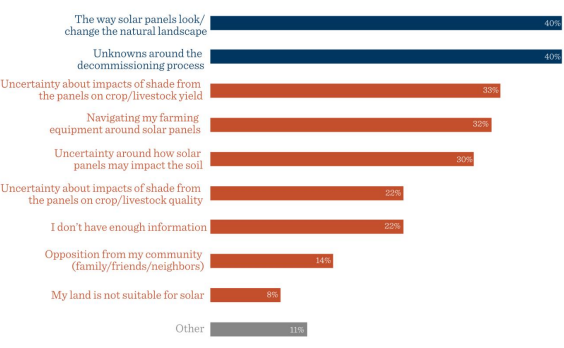
The survey consisted of 121 ranchers and farmers across Washington state between February and April 2025. More than half (56%) of the respondents represented small farms under 50 acres.
Read about the latest agrivoltaic and land-use research, such as how solar panel height affects crop yields, or how misinformation leads to local opposition and what states can do about it, here.
This content is protected by copyright and may not be reused. If you want to cooperate with us and would like to reuse some of our content, please contact: editors@pv-magazine.com.
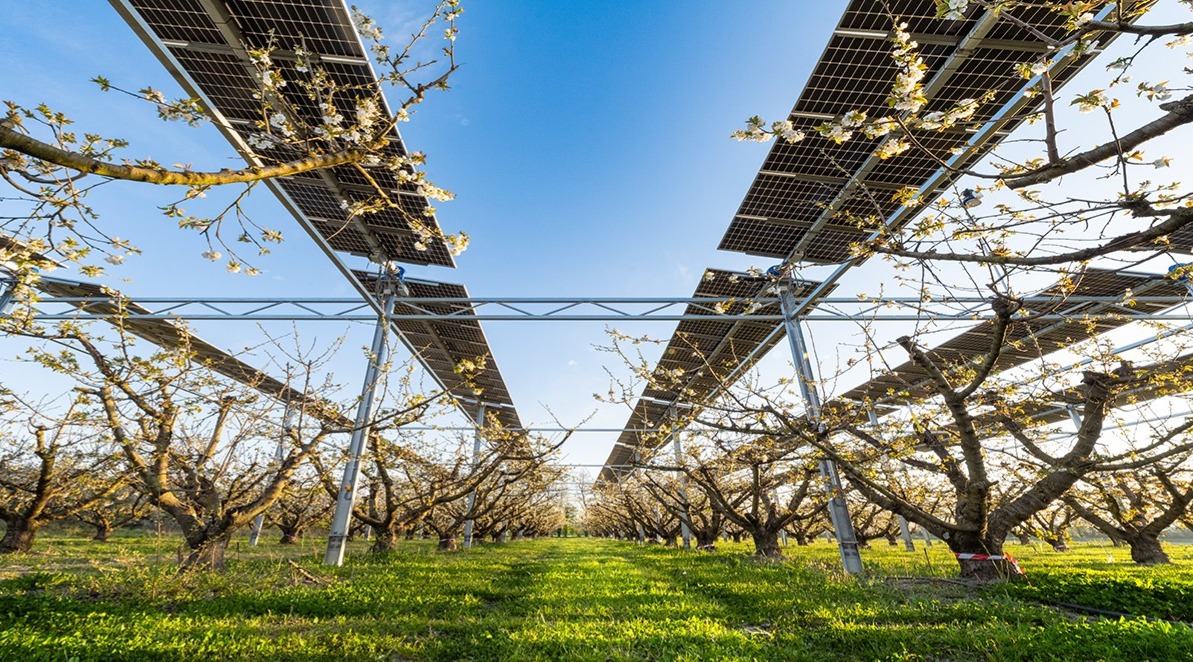
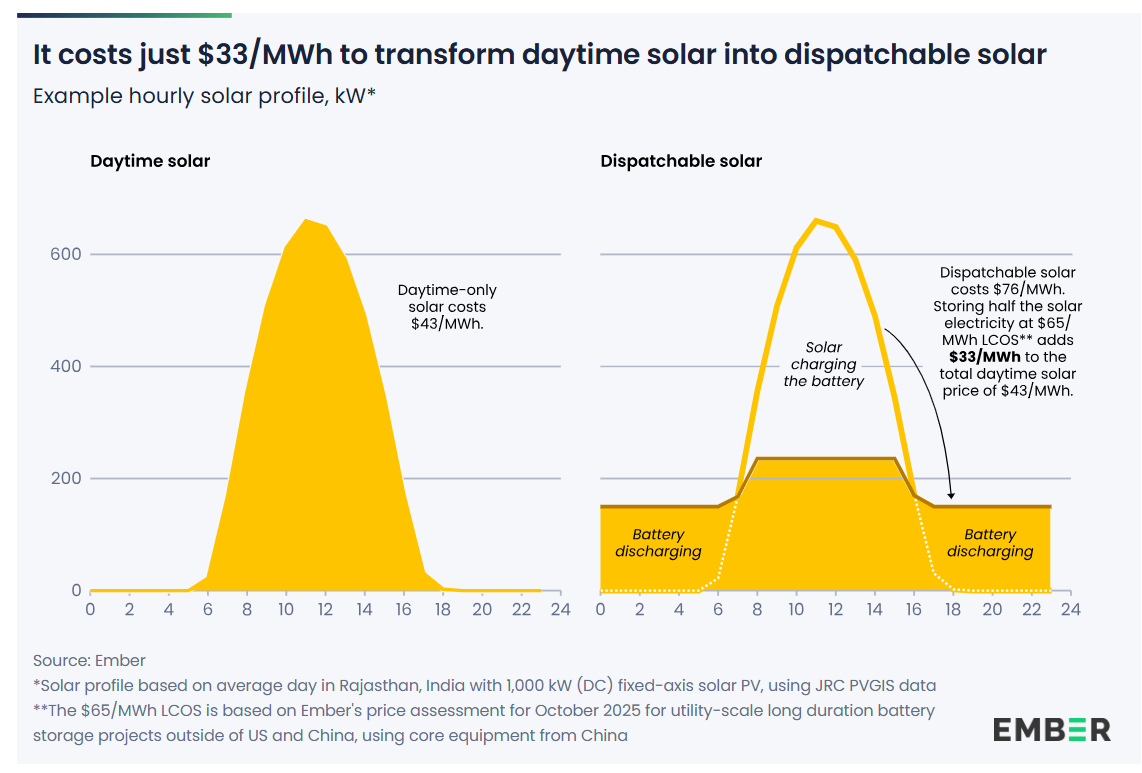


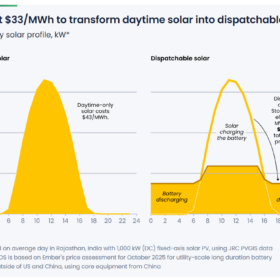

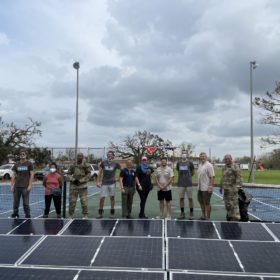
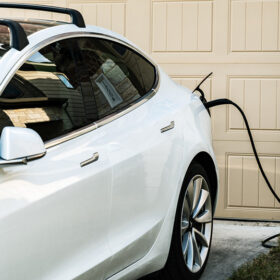
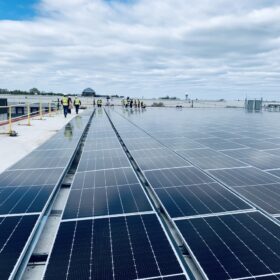
By submitting this form you agree to pv magazine using your data for the purposes of publishing your comment.
Your personal data will only be disclosed or otherwise transmitted to third parties for the purposes of spam filtering or if this is necessary for technical maintenance of the website. Any other transfer to third parties will not take place unless this is justified on the basis of applicable data protection regulations or if pv magazine is legally obliged to do so.
You may revoke this consent at any time with effect for the future, in which case your personal data will be deleted immediately. Otherwise, your data will be deleted if pv magazine has processed your request or the purpose of data storage is fulfilled.
Further information on data privacy can be found in our Data Protection Policy.